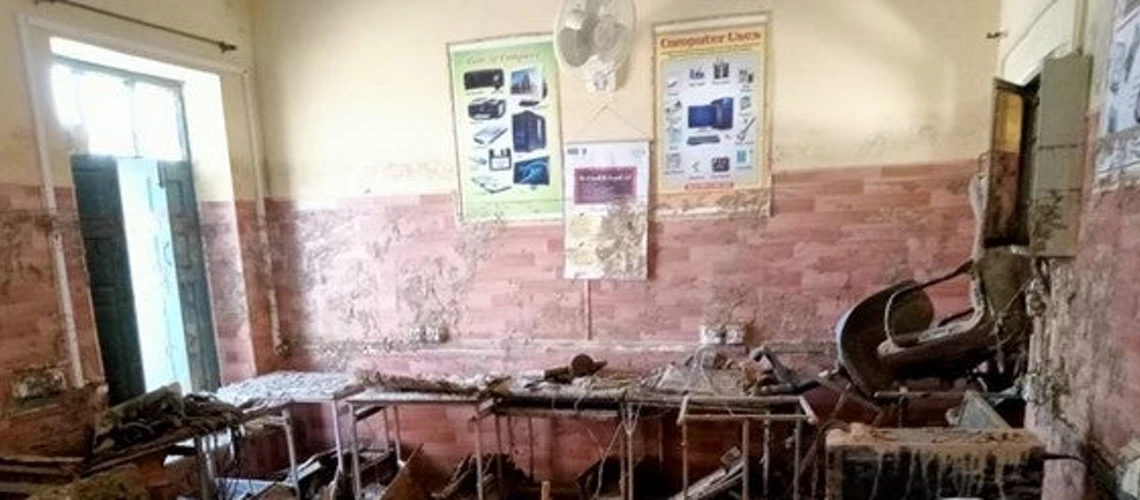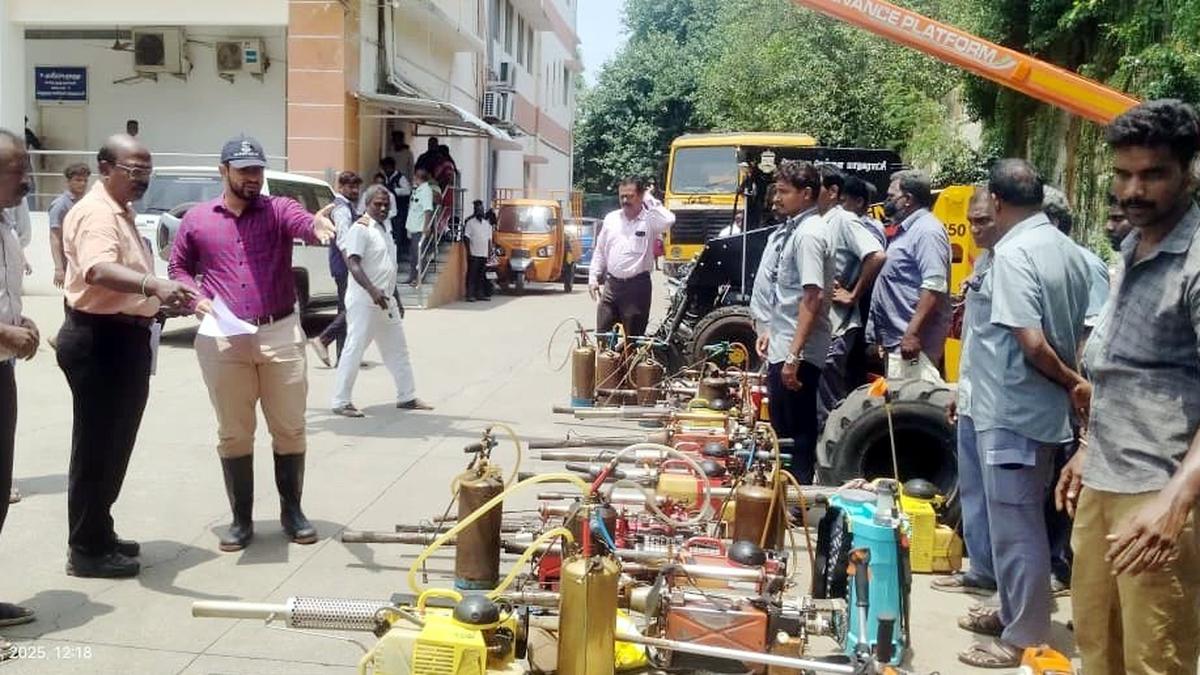By Muhammad Hassan
Copyright weeklycuttingedge

Floods, bullets, and bureaucracy: The triple threat to learning in Pakistan
The convergence of natural disasters, terrorist activities, and systemic bureaucratic inefficiencies has plunged Pakistan’s education system into a state of emergency, with the Khyber tribal district of Khyber Pakhtunkhwa (KP) serving as a stark example of the broader national crisis. Devastating floods, ongoing militant insurgencies, and administrative failures have disrupted schooling for countless children, threatening their future and exacerbating Pakistan’s already alarming education emergency. With millions of young learners out of school, urgent and coordinated action is needed to address the immediate fallout and implement long-term solutions to safeguard education in the face of recurring climate and security challenges. The situation in Khyber is a microcosm of a national crisis driven by floods and terrorism, which together threaten to rob an entire generation of their right to education. In Khyber, prefabricated schools, constructed to replace educational facilities destroyed by militants, lie idle due to bureaucratic bottlenecks within the provincial education department. Compounding this issue, many of these structures were further damaged by last month’s torrential rains, leaving students without access to safe learning environments. Over the past few decades, militant insurgencies, particularly in KP and the former Federally Administered Tribal Areas (FATA), have led to the closure, damage, or destruction of thousands of schools, systematically dismantling educational infrastructure in some of the country’s most vulnerable regions. The current crisis is not limited to Khyber or KP. As floodwaters ravage Punjab and Sindh, the educational prospects of countless children hang in the balance. Reports indicate that over 400 schools in KP and more than 2,000 in Punjab have been damaged or destroyed by floods and heavy rainfall this year alone. These numbers represent not just physical losses but also the disruption of learning for thousands of students, many of whom come from marginalized communities with limited resources to recover. The destruction of schools, coupled with the displacement of families, has created a perfect storm that threatens to deepen Pakistan’s already dire education emergency. Pakistan is grappling with one of the world’s most severe education crises, with approximately 26 million children—roughly one in four school-age children—out of school, according to UNESCO and national estimates. This staggering figure is driven by a combination of poverty, inadequate infrastructure, gender disparities, and recurring crises such as militancy and climate disasters. The ongoing Tehrik-i-Taliban Pakistan (TTP) insurgency in parts of KP has displaced thousands of families, forcing children to abandon their studies and adding to the chaos. Similarly, the extreme weather events sweeping through the country, including the catastrophic floods in Punjab and the looming threat in Sindh, have compounded the challenges. These crises not only disrupt education but also exacerbate socioeconomic inequalities, as families displaced by floods or violence struggle to access basic services, including schooling. The federal and provincial governments must act swiftly to ensure that displaced families have access to education for their children. In the immediate term, this requires setting up temporary learning centers, providing mobile classrooms, and distributing educational materials to affected communities. Once areas are cleared of militants and floodwaters recede, rebuilding educational infrastructure must be prioritized to restore stability and hope for affected children. However, reconstruction efforts must go beyond replacing damaged buildings. The government needs to invest in climate-resilient school designs that can withstand future floods and other extreme weather events. Additionally, security measures must be strengthened to protect schools from militant attacks, particularly in regions like KP, where the TTP remains active. Pakistan cannot afford to see millions more children added to the already staggering number of out-of-school youth. The long-term consequences of failing to address this crisis are profound: an uneducated population is more vulnerable to poverty, extremism, and social instability. While rebuilding schools is a critical step, it is a time-intensive process that cannot fully address the immediate needs of displaced and affected children. To ensure uninterrupted education, innovative and informal methods must be employed. For example, community-based learning programs, radio or online education platforms, and partnerships with local NGOs can provide temporary solutions to keep children engaged in learning. Teachers and volunteers can be mobilized to deliver lessons in makeshift classrooms or open-air settings, ensuring that education continues even in the face of adversity. The education emergency is further complicated by Pakistan’s broader socioeconomic challenges. The agricultural sector, which employs nearly 40% of the workforce and accounts for a quarter of the economy, has been devastated by the floods, threatening food security and livelihoods. This economic strain reduces families’ ability to prioritize education, as many are forced to focus on survival. The finance ministry has warned that flood-related losses could necessitate increased food imports, further straining fiscal resources and potentially diverting funds from education and other critical sectors. The combination of economic hardship, displacement, and damaged infrastructure creates a vicious cycle that disproportionately affects the most vulnerable. To address this multifaceted crisis, the government must adopt a holistic approach that combines immediate relief with long-term reforms. Constitutional, legal, and social changes are needed to strengthen the education system and make it more resilient to shocks. For instance, decentralizing education governance could empower provincial authorities to respond more effectively to local needs. At the same time, federal support is crucial to ensure equitable resource allocation and coordination. Collaboration with businesses, civil society, and international organizations can also play a pivotal role. Private sector partnerships can fund school reconstruction and provide technological solutions, while NGOs can support community-based education initiatives. International donors, including organizations like UNICEF and the World Bank, can provide financial and technical assistance to bolster Pakistan’s education system. Moreover, addressing the education crisis requires tackling the root causes of vulnerability, including climate change and insecurity. Investments in climate adaptation—such as flood-resistant infrastructure and early warning systems—can reduce the impact of future disasters on schools and communities. Similarly, sustained efforts to counter militancy, including strengthening law enforcement and community engagement, are essential to protect educational facilities and ensure safe learning environments. Without these measures, the miseries of children affected by terrorism and climate disasters will only deepen, perpetuating cycles of poverty, illiteracy, and instability. The scale of the challenge demands urgent and coordinated action. The government must prioritize education as a national security issue, recognizing that an uneducated population undermines economic growth, social cohesion, and resilience to future crises. By investing in education now, Pakistan can break the cycle of vulnerability and empower its youth to build a brighter future. Failure to act decisively risks condemning millions of children to a life without opportunities, further entrenching the challenges posed by climate change and insecurity. The destruction of thousands of schools in KP and Punjab, combined with the displacement caused by floods and the TTP insurgency, threatens to rob countless children of their future. Immediate action is needed to provide temporary learning solutions, rebuild resilient educational infrastructure, and implement structural reforms to address systemic vulnerabilities. By combining short-term relief with long-term investments in climate adaptation, security, and education reform, Pakistan can safeguard its youth and build a more resilient society. Without bold and coordinated efforts from federal and provincial authorities, alongside support from civil society and the private sector, the nation risks deepening its education crisis and perpetuating cycles of poverty and instability.



